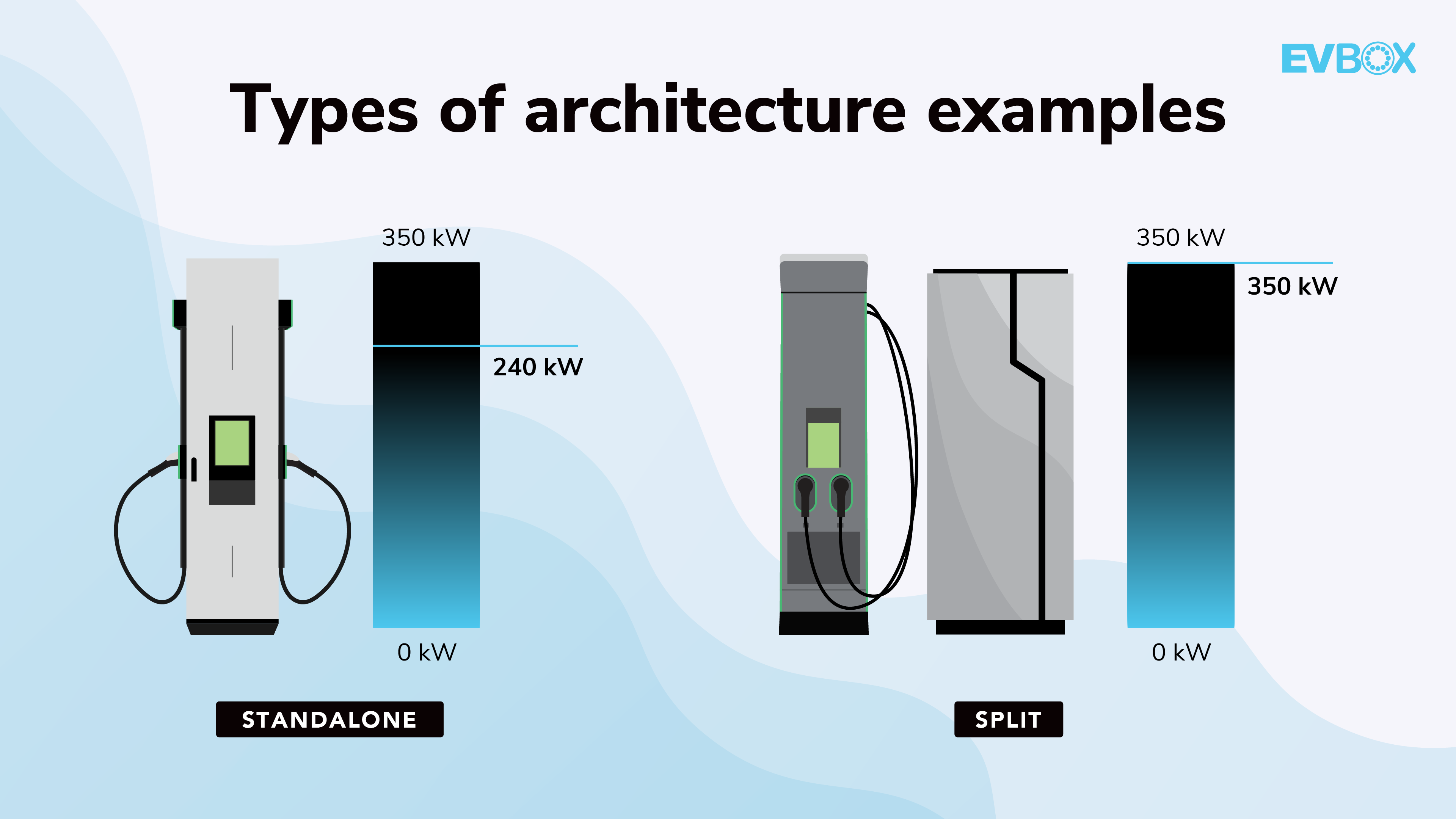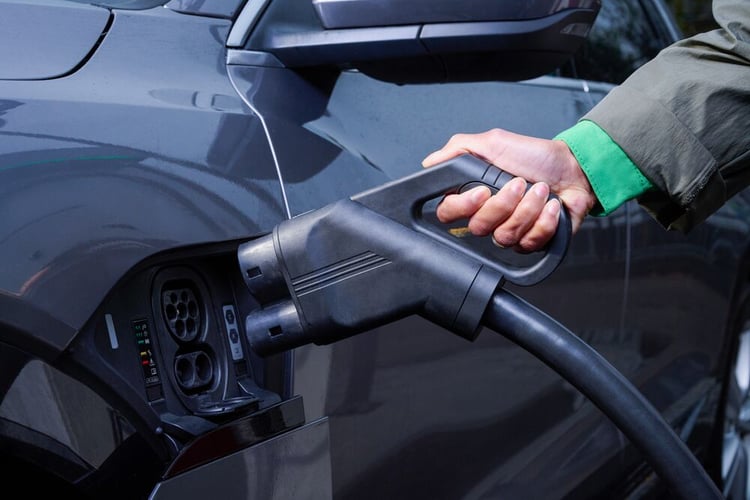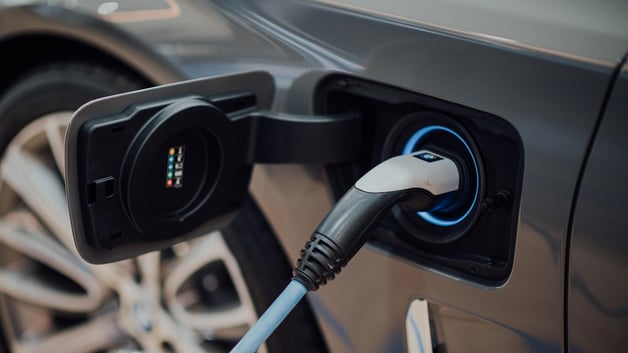
How long does it take to charge an electric car with Level 3 charging?
If you are familiar with electric vehicles (EVs), you’ve probably heard the terms Level 1, Level 2, and Level 3 charging thrown around in relation to charging speeds. Also known as DC fast charging, Level 3 charging is the fastest way to charge an EV, recharging most vehicles in minutes as opposed to hours.
Put simply, Level 3 charging delivers more power, faster, making it the ideal charging type for quick-stop locations such as service stations and fleet depots. Given the high-voltage supply required for Level 3 charging (and the higher price point), you won’t typically see DC fast charging stations installed in residential locations.
So, how fast is Level 3 charging really? And what type of things affect charging speed? Read on to learn everything you need to know about the speed of Level 3 chargers.
How do EV charging stations work?
Before we dive into the speed of EV charging, it is important to get a basic understanding of how EV charging works.
AC vs DC power
There are two types of electric currents that can fuel an electric car: alternating current (AC) and direct current (DC). All batteries—including those in EVs—use DC for charging. However, power from the grid is AC by nature. So, to charge an EV, the AC from the grid needs to be converted to DC for the battery. This is done by an AC/DC converter.
.png?width=1280&name=Understanding%20electricity%20(2).png)
The main difference between Level 3 charging and Level 1 and Level 2 is where the conversion takes place. Level 3 chargers convert AC to DC within the charging station—allowing DC power to flow directly from the station itself into an EV’s battery. With more room to house larger converters, DC chargers can convert power very quickly. As a result, some DC stations can deliver up to 350 kW of power and fully charge an EV in just 15 minutes.
Level 1 and 2 chargers, on the other hand, deliver AC into an EV where it is then converted to DC via a small onboard charger. Given the limited space inside a vehicle, the size of the charger is limited. That's why the maximum speed of a Level 2 charger is around 22 kW to 43 kW.
So, now we understand the basics, let's take a closer look at the things that affect charging speed.
What affects Level 3 charging speed?
Many factors can impact charging speed, but it mainly comes down to the power output, the type of vehicle, and the battery’s state of charge (SoC).
1. The power output of the charging station
As we learned earlier, Level 3 charging stations charge faster than their AC counterparts because they have more space to house larger converters. However, not every Level 3 charging station is the same. They come in various shapes and sizes, and the same logic applies: the larger the converter, the more power a Level 3 charger can deliver.
DC charging station architecture can also have quite an impact on power output. Standalone stations comprise a single unit and can deliver roughly 50 kW to 250 kW of power. Split architecture, on the other hand, is made up of two components: a customer-facing user unit, and a behind-the-scenes power unit. With an entire unit dedicated to converting and delivering power, split architecture stations generally deliver more power—from 175 kW to 350 kW.

2. The type of vehicle and its battery
While power output is crucial when it comes to dictating charging times, the vehicle itself is the ultimate master. When designing EVs, vehicle manufacturers make many choices regarding the size, weight, performance, and life of the batteries they use. Let’s take a look at how these decisions impact DC charging times.
Battery capacity
Certain EVs support more power than others. The high-end Tesla Model 3, for example, has a fast charging capacity of 250 kW, whereas the more mainstream Peugeot e-208 supports 50 kW. As a general rule of thumb, the larger the battery pack, the faster charging it can support.
Temperature
Temperature also plays a vital role in determining charging speed. Battery cells operate most effectively between 20–25°C. What’s more, weather conditions, motorway vs city driving, and fast charging all impact battery temperature. If temperatures get too low or too high, a vehicle’s battery management system (BMS) reduces power input to protect the battery—thus reducing charging speed.
Many high-end EVs are equipped with a heating or cooling system to regulate the battery’s temperature, while some entry-level vehicles are not—a clear indicator as to why vehicle type can make a difference when it comes to charging speed.

3. The state of charge
The state of charge (SoC) of a battery in relation to its full capacity also impacts charging time. To increase battery life and prevent overheating, charging slows down significantly when a battery is almost fully charged. That’s why DC fast charging is most effective between zero and 80 percent. Charging the remaining 20 percent of the battery can take around the same amount of time as it took to charge the first 80 percent, which if you’re paying per minute, may not be very economical.
How long does it take to charge with level 3 charging?
With different types of vehicles and batteries, a variety of fast charging stations with numerous power-outputs, and a handful of factors that can affect charging speed, it is impossible to provide an exact answer to that question.
However, we can give you an accurate estimate of how long it takes to fast charge vehicles per type of vehicle (based on average battery size) and level of power output.
| Type of EV | Passenger Vehicle | Large EV | Light Commercial | Trucks & Busses | Trucks & Busses |
| Average Battery Size (right) Power Output (Below) |
50 kWh | 75 kWh | 100 kWh | 200 kWh | 300 kWh |
| 50 kW | 53 min | 1 h 20 min | 1 h 48 min | 3 h 35 min | 5 h 23 min |
| 90 kW | 30 min | 45 min | 1 h | 2h | 3 h |
| 120 kW | 22 min | 33 min | 44 min | 1 h 30 min | 2 h 14 min |
| 150 kW | 18 min | 27 min | 36 min | 1 h 12 min | 1 h 48 min |
| 180 kW | 15 min | 22 min | 30 min | 1 h | 1 h 30 min |
| 240 kW | 11 min | 16 min | 22 min | 44 min | 1 h 7 min |
| 300 kW | 8 min | 13 min | 17 min | 35 min | 53 min |
| 350 kW | 7 min | 11 min | 15 min | 30 min | 46 min |
Average time to charge the battery from 20 percent to 80 percent state of charge (SoC). For illustrative purposes only: Does not reflect exact charging times.
Do all electric cars support level 3 fast charging?
Level 3 charging works with the majority of EVs. But, as we learned above, different vehicles have different battery capacities, and some can accept more power than others. What’s more, a small portion of EVs and plug-in hybrid electric vehicles (PHEVs) are not compatible with fast charging at all—simply because their batteries are too small.
To get the most out of Level 3 charging, it’s important to find out if the vehicle supports DC charging and if so, what’s the maximum capacity it supports.
Want to learn more about Level 3 charging and the types of fast chargers out there? Find everything you need to know about DC fast charging, including many frequently asked questions, on our website.
Learn what Level 3 charging can mean for your businessRead our free ebook to get a complete overview of all fast EV charging possibilities, their differences, and what to look out for before investing. |
Related articles

Is DC fast charging bad for your EV battery?
While there is research that shows that frequent rapid (DC) charging can somewhat degrade the battery quicker than AC...

5 things you didn't know about EV batteries
There’s little doubt that electric mobility is the future. Electric vehicle (EV) sales have skyrocketed in the past few...

Electric car battery weight explained
How much an electric vehicle (EV) battery weighs depends greatly on the vehicle and model. On average, however, EV...

